Walks start at Crawford Art Gallery
The trails are based on my collaboration with Cork City Council in 2007 to mark the centenary of the birth of Seamus Murphy..
Introduction:
Born in Greenhills, Burnfort, County Cork in 1907, Seamus Murphy (1907-1975) was one of the foremost stone carvers and sculptors of his time, his work forming part of modern European tradition. From 1922 until 1930 Seamus Murphy worked as an apprentice stone carver at the Marble Art Works of John Aloysius O’Connell in Blackpool, Cork.
Seamus received a scholarship in 1931, which enabled him to go to London and then to Paris where he was a student at the Académie Colarossi and studied with the Irish-American sculptor, Andrew O’Connor. Returning home, he established his own workshop in Blackpool. Seamus employed a high level of design and craftsmanship while executing his work, whether they were plaques, headstones, figures, monuments or memorials.
The trail below on some of the works of Seamus Murphy is based on a publication by Cork City Council and I in 2007, the centenary of Seamus’s birth.

Frameworks Film presents Seamus Murphy A Quiet Revolution explores the life and career of the Irish sculptor Seamus Murphy (1907-1975)
Walk One – The Making of an Artist:
Start at Crawford Art Gallery. Cross over Christy Ring Bridge and pass into Blackpool, in valley of the Kiln River, a tributary of the River Lee. Blackpool was the core of industry in Cork in the eighteenth and nineteenth centuries. In the district, attempts were made at various times to start and revive the manufacture of textiles. The leather industry was vibrant in Blackpool with no fewer than 46 tanyards at work there in the year 1837 giving employment to over 700 hands and tanning on average 110,000 hides annually. Distilling became significant in the Cork region during the last decades of the 1700s.
Follow northwards into Blackpool. On your left, you will see the home of Lady’s Well Brewery. The brewery takes its name form a famous well nearby and was founded in 1854 by Messrs. James, William, Jerome and Francis Murphy. Take the first turn left after the Brewery and walk onto Watercourse Road.
Although Seamus Murphy was born in rural Cork, his fondest memories were those spent growing up in the northside of the City, which he later chose as the location to set up his own studio or the ‘skullery’, now the site of the AIB bank on the Watercourse Road. Seamus’s affinity with this area of town stemmed from his formal training as a foliage carver in the Marble Art Works of J.A. O’Connell, which was located adjacent to his studio.
The exhibition entitled “Seamus Murphy and Blackpool” in the Cork City and County Archive Building documents his contribution to the locality. The 1930’s coincided with a revival of Blackpool’s fame as an industrial centre for textiles. William Dwyer’s Sunbeam Wolsey Factory used raw wool and silk to produce socks, underwear and silk hosiery. As a patron of the arts, Dwyer commissioned Seamus to create plaques for his factory buildings at Millfield between Blackpool village and the Commons Road, Youghal and Midleton. These depicted scenes of weaving, spinning and cotton. His greatest commission to Seamus was to the design.
The Church of the Annunciation in 1945 for the workers in his Sunbeam Factory in Blackpool. All of the preliminary sketches for the church are on display in the City and County Archives on Water Street. In September 2007 the building will be named in commemoration of the artist, with a stone plaque by the artist Ken Thompson erected.
Leave the Archive Building and follow the map to Blackpool Church. As a student in Paris Seamus Murphy spent much of his time on pilgrimages to Chartes Cathedral, and also visited St. FinBarre’s Cathedral in Cork. He developed an in-depth understanding of the role of art as an integral part of religious devotion. He sought to create a new style for religious art. He merged the formalist language of Modernism, which he had witnessed in Paris with the grace of the International Gothic Style. Seamus Murphy worked with the architect Boyd Barrett to design Blackpool Church.
Seamus compiled drawings for both the interior and exterior structures and features. His work on the church included designing all three altars, the baptismal and holy water fonts as well the carvings of the annunciation panel, the plaque above the children’s altar, the Sacred Heart and a Madonna. His figures convey a sense of reverence while the youthful facial features reveal characteristic emotional intensity. He also designed the bell tower and bell dedicated to William Dwyer’s daughter Maeve, who tragically died of an acute case of polio at the young age of 27.
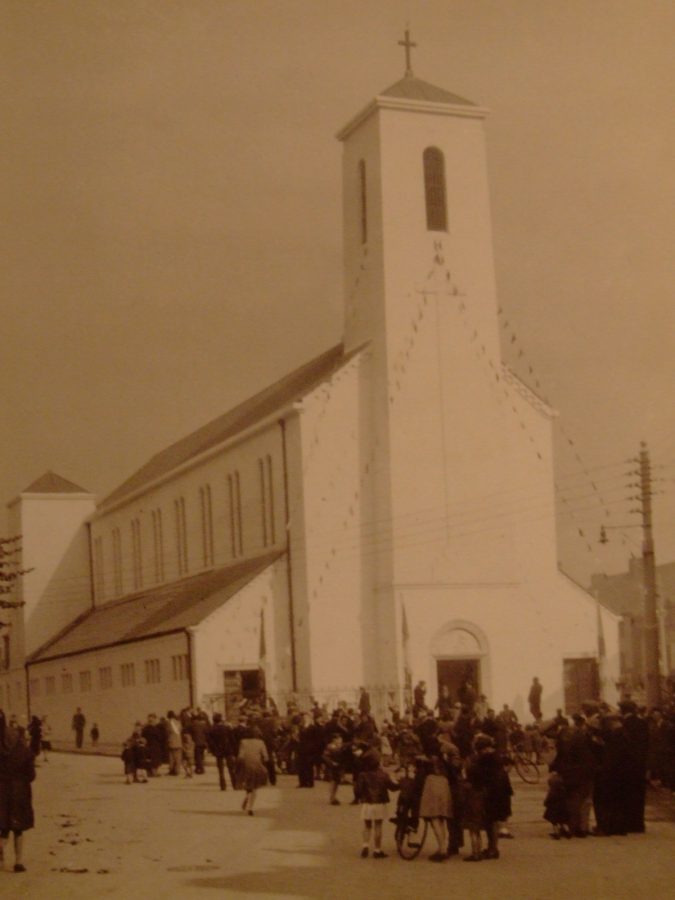

Church of the Annunciation, Blackpool, present day (picture: Kieran McCarthy)
Walk Two – Seamus & Cork’s Cultural Influences:
Walk two begins at the Crawford Art Galley Through the direction of Daniel Corkery, a Cork teacher and writer, Seamus Murphy realized the importance of having both a formal education as well as a trained apprenticeship. He enrolled in night classes at the Crawford School of Art, now the Crawford Art Gallery.
Leaving the Crawford Art Gallery, walk down Paul Street, an area reclaimed and developed by Huguenot craftsmen in the early eighteenth century. Originally, Cork comprised a series of marshy islands, which the Irish name for the city, Corcaigh, or marshes, reflects.
Through a combination of native and outside influences, its ever-changing townscape and society was shaped by different cultures such as the Vikings, the Anglo-Normans, Quakers and Huguenots. Seamus Murphy was inspired by the evolution of the city by what he deemed the “beautiful street vistas” and the “many valuable buildings of all ages and styles”. So open your eyes, look around and view the world of Seamus Murphy.
Using the map, enter the Grand Parade and Bishop Lucey Park. The Park was created to celebrate the 800th anniversary of the granting of the first charter by King Henry II to the citizens of the walled town of Cork. The arched entrance gates were once located at the former entrance to the City Corn Market on Anglesea Street behind present day City Hall. Enter the Park and walk past the preserved section of Cork’s medieval town wall. In front of you is a sculpture by Seamus of Mary Anne a well-known onion seller from Cork. During his career, Seamus strove to make sculpture relate to real life in his city.
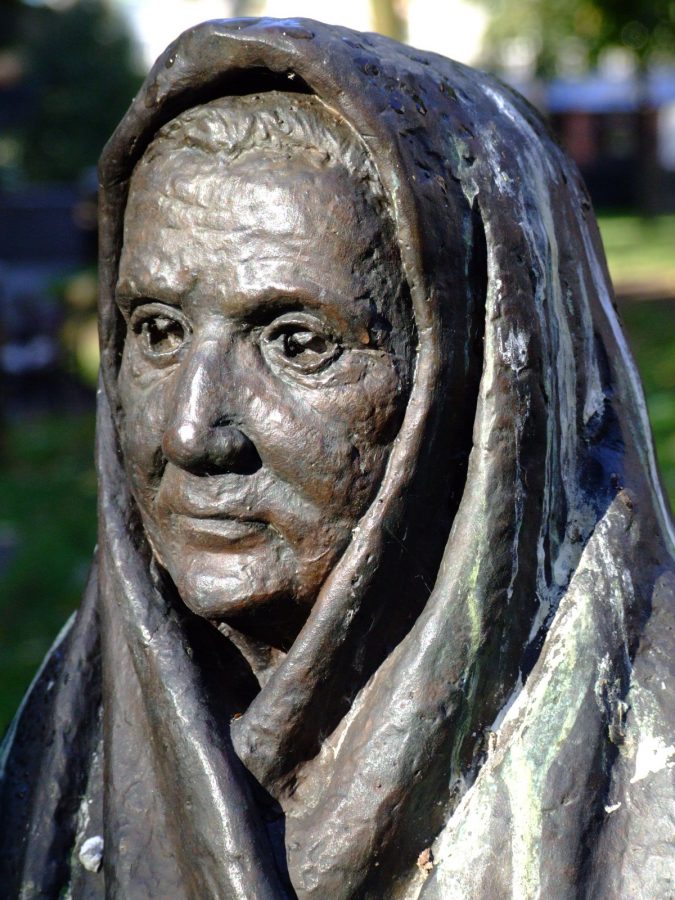
Exit the Park. Walk down the Grand Parade, past the Tourist Office and turn left onto the South Mall. Different architectural styles and details reflect a legacy of three centuries. Once one of the principal canals in the city, the street was created in the late eighteenth century and evolved into Cork’s financial centre. At the eastern end of the South Mall stand two other nineteenth century architectural gems of finely carved limestone, the former site of the Provincial Bank, now Thomas Crosbie Holdings and the Trustee Savings Banks respectively.
Cross over Parnell Bridge to Cork City Hall. Seamus Murphy’s busts of two of Cork’s most famous Lord Mayors Terence Mc Swiney and Tomas McCurtain stand in the foyer of the City Hall. During the Irish War of Independence in 1920, McSwiney died on hunger strike and McCurtain was shot in his bed. The economic realities of Ireland in the early twentieth century and within a city such as Cork were very different to those of today. Today’s ‘Celtic Tiger’ economy was all in the unforeseeable future for Cork.
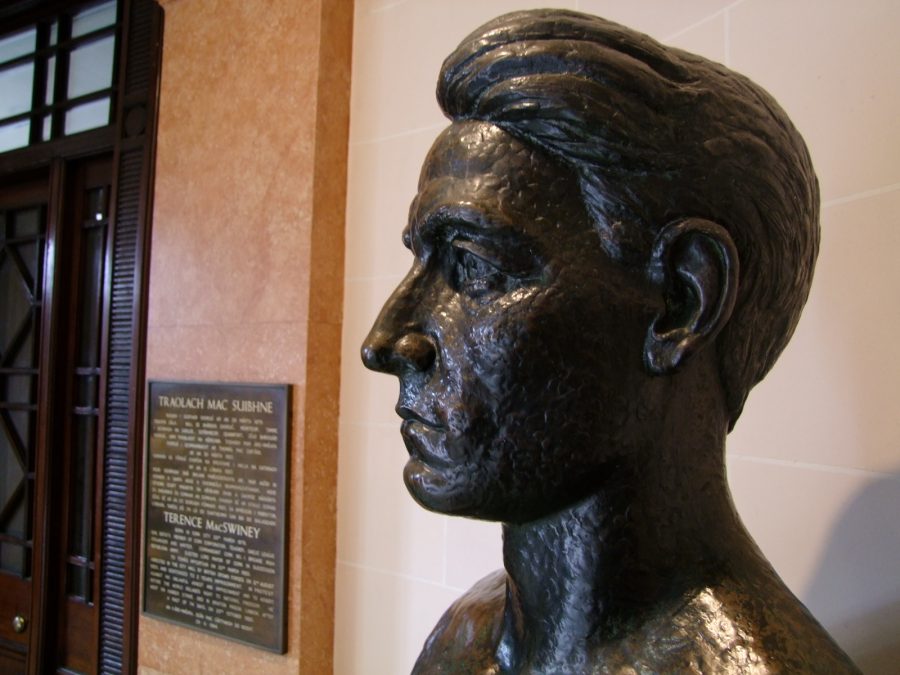
The city’s principal export was butter, the market for which collapsed in 1924. The economic situation did not lend itself to many artistic commissions but the political situation did. As an artist in a country recovering from the political strife of civil war most of Seamus Murphy’s commissions from the state were for art which commemorated political figures. In the City Hall foyer, a bronze plaque by Seamus also immortalises John F. Kennedy and a bust remembers Jack Lynch, a former Taoiseach (Irish Premier) and Cork sporting hero.
From City Hall, cross back across Parnell Bridge, down Parnell Place, take the second turn left onto Maylor Street and proceed onto St. Patrick’s Street. Cork’s principal thoroughfare was once a curving channel of the River Lee and in the early 1700s was turned into a canal with quays, shops and warehouses on both sides. Subsequently filled in, today, the old streetscape has been combined with the new design of Spanish architect Beth Gali.
At the end of St. Patrick’s Street is Seamus Murphy’s Dog drinking trough. Whilst studying in Paris, he encountered art on the corner of every streetscape. Seeing how art was an integral part of French life, his mindset on what public art was and should be evolved. That experience remained the keystone for his ideas when he returned to Ireland. One of his most interesting creations is this dog’s drinking bowl inscribed with the Irish word ‘Madraí’, which means ‘dogs’. It can be seen at the lower end of St. Patrick’s Street below the frontage of Zerep Shoe Shop, near to St. Patrick’s Bridge on the Eason’s side.
When this piece was commissioned the building was the site of a café, where ladies of the town would meet, tying their pet dogs to the railings outside. The café owner upon seeing the bowl indicated that some of his customers might not understand what ‘Madraí’ meant. Seamus pointed out that the animals themselves would easily understand the meaning of a bowl filled with water at dog level.
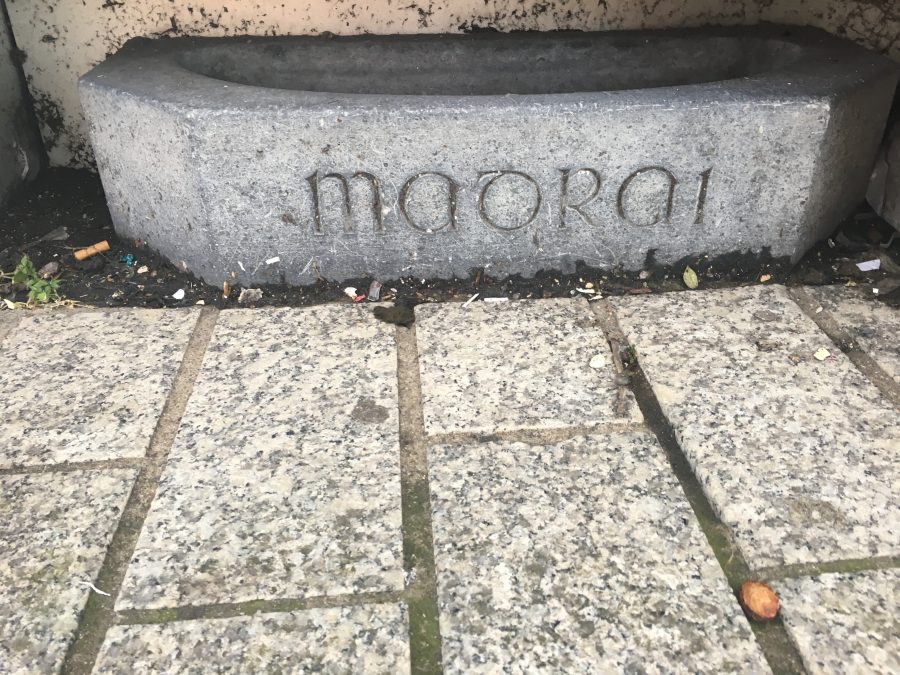
Walk 3 – Seamus as Artist and Craftsperson:
Walk three begins at the Crawford Art Galley. Walking from the Gallery, follow the map along the North Channel of the Lee west to North Gate Bridge. It is easy to see what could have inspired the work and mind of Seamus Murphy. The city’s panoply of life – people, buildings, quays, bridges, river – hold echoes of the history and cultural development of this place.
When the Anglo Normans established a fortified trading centre in Cork around 1200 A.D., North Gate Drawbridge formed one of the principal entrances. Lord Mayor, Anthony Barry T.D. opened the current structure on the 6th November 1961. The new bridge was named Griffith Bridge in honour of Arthur Griffith, founder and first leader of Sinn Féin. A bronze plaque by Seamus Murphy immortalizes Arthur Griffith on the quay wall on the Shandon Street side. Seamus employed a high level of design and craftsmanship while executing his work, whether they were plaques, headstones, figures, monuments or memorials. He believed that art had a function regardless of how large or small a commission was.
Walk along the North Mall and up into Sunday’s Well. A Franciscan abbey, founded in the year 1229, was once located on the present day site of the North Mall. Associated with the monastic order, Tobar an Domhnach or ‘Sunday’s Well’ was situated only a mile to the north west of the walled town. A plaque outlining its location with the date 1644 now marks the spot on Sunday’s Well Road. At the heart of Sunday’s Well is St. Vincent’s Church, which was dedicated in 1856. Nearly one hundred years after the church’s dedication, Seamus Murphy was asked by the Vincentian brothers to execute the Madonna of the Globe for the first celebratory novena dedicated to the Immaculate Heart of Mary.
As Sunday’s Well Road meets the river, turn left and cross Daly’s Bridge, more affectionately known as the Shaky Bridge due to its suspension style of architecture. Cross into Fitzgerald’s Park.
Seamus Murphy had strong his views on how art should be an integral part of society. With the help of patrons such as Conn Murphy, he created a Sculpture Park in Fitzgerald’s Park. The aim was that by introducing artwork into the public arena, Cork citizens would appreciate and respect it. Among Seamus’s own work exhibited here is Seasons on the bandstand, Dreamline to the rear of the Lord Mayor’s Pavilion and Michael Collins, the Irish revolutionary leader and patriot involved in the War of Independence and killed during the Civil War, who stands proud on a tall plinth across from the Museum.
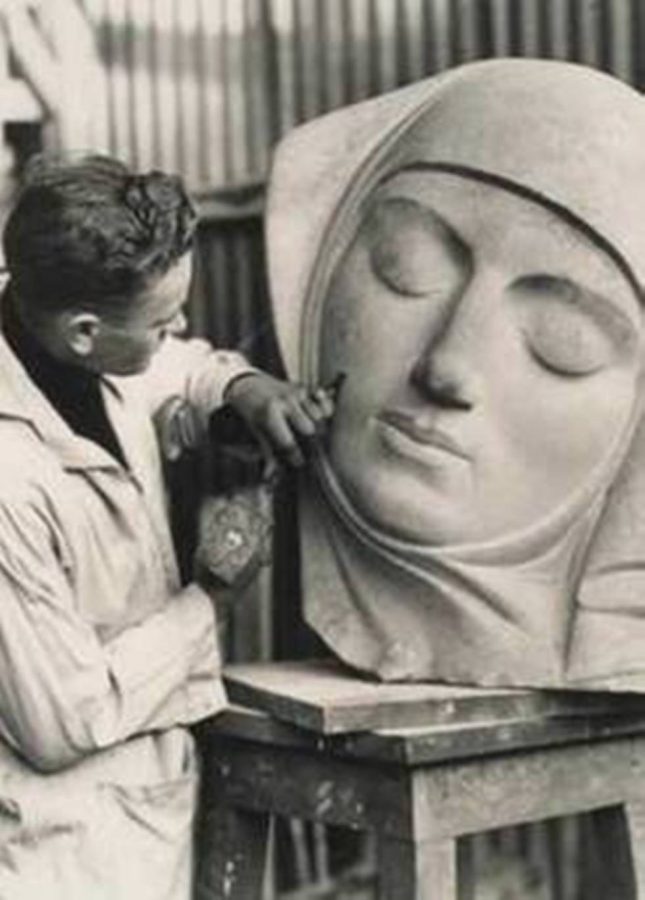
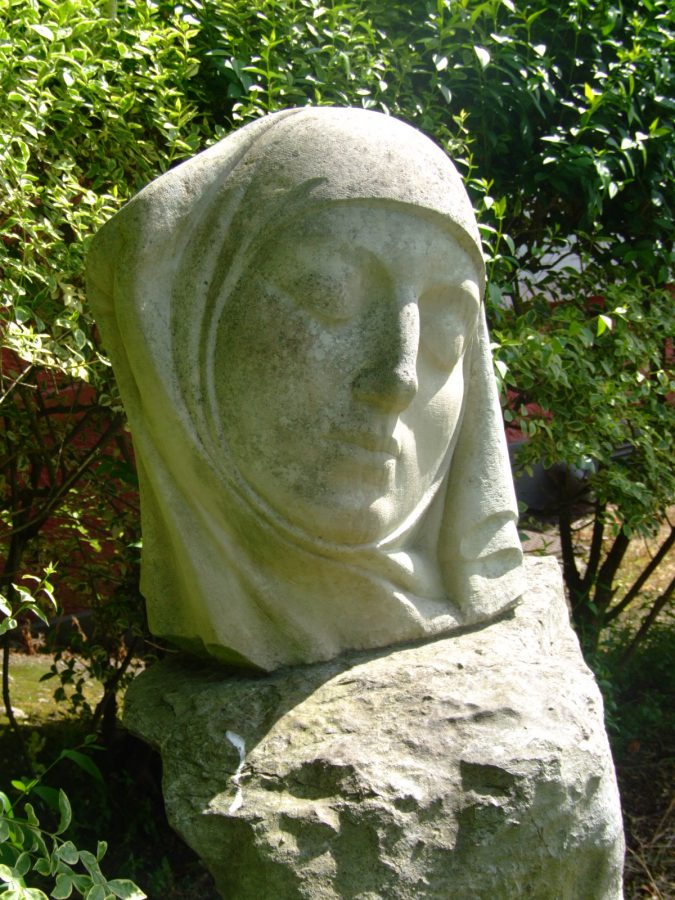
Dreamline, Fitzgerald’s Park, Cork, present day (picture: Kieran McCarthy)
Leave Fitzgerald’s Park and follow the map to Gaol Cross. The only remaining aspect of the early nineteenth century designed County Gaol is its architecturally perfect Doric style entrance portico. Seamus Murphy completed the Gaol Cross Memorial adjacent to the portico. His unparalleled skills at letter carving helped Seamus gain significant commissions. The memorial details those who were interred by the British Government in the Gaol during the Irish War of Independence.
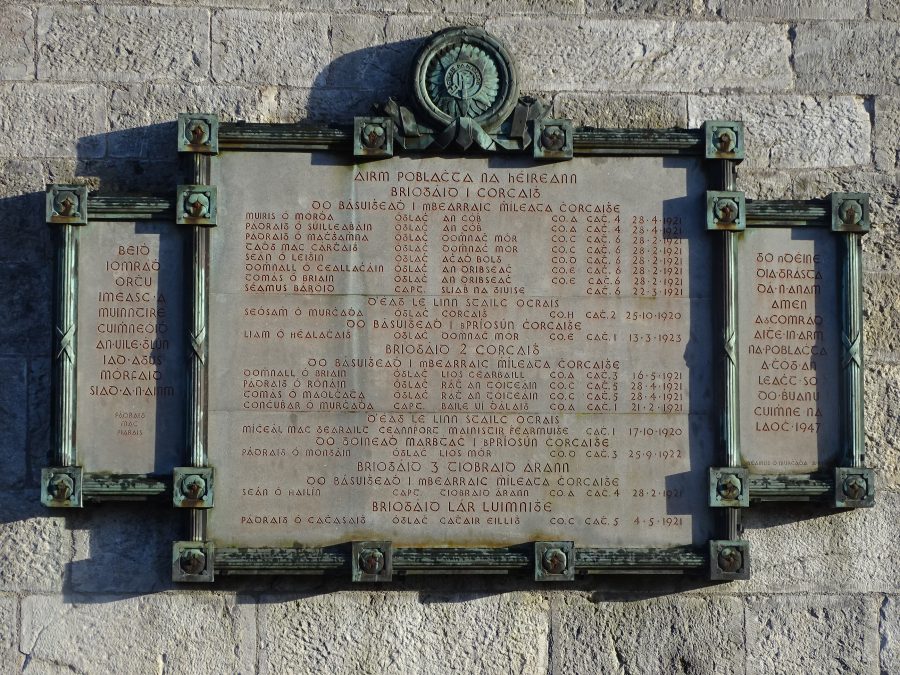
Enter the grounds of University College Cork (UCC) and walk to the President’s Garden. UCC was founded under the provisions made by Queen Victoria in 1845 to endow new Colleges in Ireland for the advancement of learning in Ireland. In 1934 a group of politically motivated students at the College threatened to blow up a statue of Queen Victoria situated on the apex of the Aula Maxima building if it was not replaced with St Finbarr, the patron saint of Cork.
Seamus was awarded the commission and went on to carve a simple image of Finbarr using the same geometric simplicity as seen in the St. Finbarr above the entrance door to the Honan Chapel, a nineteenth century chapel on the campus. During his career, Seamus became friends with a group of professors, writers, musicians, and artists alike, the busts of which can be seen in the vestibule of the University’s stone corridor. Contrasting with the busts of Frank O’Connor, Seán Ó Riordáin, and Seán Ó Faoláin is the bust of Daniel Corkery created by Joseph Higgins. Seamus had a great respect for the work of Higgins. In 1944 he married Joseph’s daughter Maighréad.
Use the map to exit UCC on College Road and walk on to St FinBarre’s Cathedral. Designed by architect William Burges, the present Cathedral occupies the site of the ancient seventh century monastery of Saint Finbarr. Within the Cathedral are two plaques by Seamus Murphy commemorating that of Lieutenant Col. G. Wright and the Blemens families respectively.
In the shadow of St. FinBarre’s Cathedral is the Sharman Crawford Technical College, now the Crawford College of Art. On the exterior of the building Seamus’s three panels depicting Construction, Engineering, Science can be seen. Seamus’s early training as a carver consisted of a seven year established apprenticeship in learning the craft of stone cutting and carving, a year improving, and a year under the scrutiny of the foreman. His training at the Crawford School of Artentailed drawing and modelling from the Greco-Roman copied plaster casts from the Vatican museums and a section on Irish sculpture consisting of examples from the Neo Classical style works of Waterford born sculptor John Hogan.

